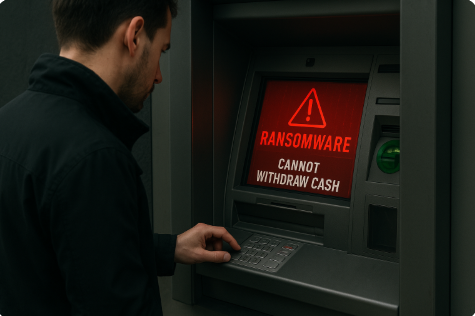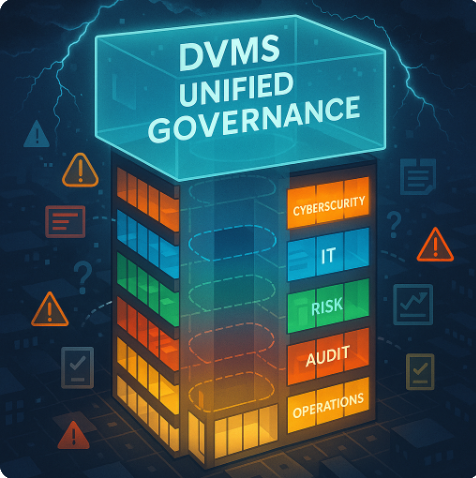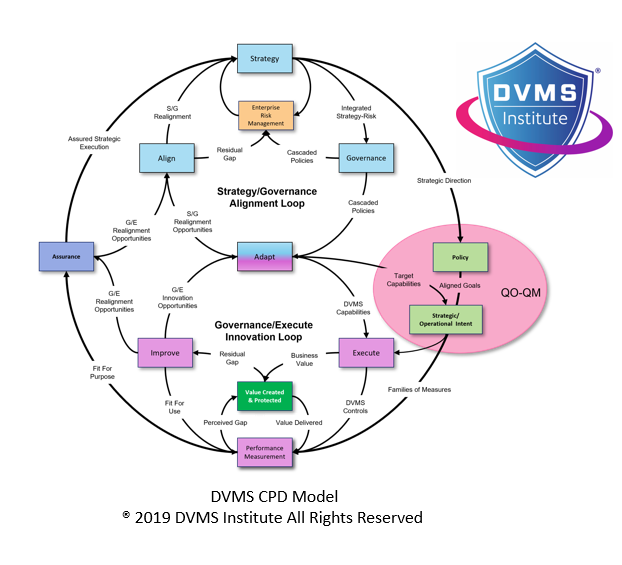How a Digital Value Management System Enables Resilience in a Complex Digital Ecosystem
Rick Lemieux – Co-Founder and Chief Product Officer of the DVMS Institute
A Digital Value Management System (DVMS) is a strategic overlay that enables organizations of any size, scale or complexity to thrive in a world of digital chaos and danger.
It does this by positioning cyber operational resilience not as a technical function but a strategic, enterprise-wide capability that mandates engagement from top Leadership to Frontline Employees, trained to proactively identify, classify, and mitigate the systemic cyber risks that impact digital business operations.
Enabling cyber operational resilience requires a coordinated effort across an organization’s Strategy, Governance, and Operational business layers. When each layer is aligned and operating cohesively as an integrated system, service providers can proactively protect their cyber assets and ensure continuity of digital business operations.
By reorienting how organizations think about cybersecurity—from a technical problem to a core aspect of value creation and protection—the DVMS framework provides a scalable, adaptive model designed to align governance, risk, and operations with strategic objectives.
This unique and innovative approach to Adaptive Governance, Resilience, and Assurance (GRA) also enables service providers to comply with any government-mandated cyber regulation (SEC, DORA, NIS2 etc.) or maturity model program (SCF, HITRUST, CMMC etc.).
Here’s how DVMS accomplishes this transformation.
-
Aligning Organizational Mission with Strategic Outcomes
The DVMS begins with a clear emphasis on strategy-risk, a concept that recognizes the inseparability of business strategy and risk management. Unlike traditional models that treat risk as a reactive function, DVMS positions risk as an inherent part of value creation, integral to achieving the mission of the organization.
The DVMS CPD Model—which stands for Create, Protect, and Deliver digital business value—is at the heart of DVMS. It ensures that the strategic intent of the organization is expressed not just in planning and goal setting, but in operational execution and feedback loops. The CPD Model helps organizations:
- Develop strategies that are risk informed.
- Align risk management practices with the organization’s mission and digital objectives.
- Create pathways for continual improvement through feedback and metrics (e.g., via GQM and QO-QM methodologies.
The mission becomes actionable through the Z-X Model, which defines the seven minimum viable capabilities every organization must possess: Govern, Assure, Plan, Design, Change, Execute, and Innovate. This structured lens allows organizations to integrate strategic vision with operational execution, ensuring alignment across the enterprise.
-
Strengthening Capabilities for Digital Resilience
DVMS promotes a systems-based view of the organization and its digital business systems. It treats each system as a complex adaptive system composed of interrelated parts (or subsystems) that work together to create, protect, and deliver value. Each of the seven capabilities in the Z-X Model is a system of practice areas that contribute to organizational resilience:
- Govern ensures that leadership sets direction, defines policy, and fosters a risk-aware culture.
- Assure validates that actions align with strategic intent and policies.
- Plan and Design enable thoughtful preparation and development of solutions that are sustainable, and risk informed.
- Change, Execute, and Innovate manage transitions, deliver value, and drive continuous improvement.
By mapping all organizational systems and activities to these capabilities, DVMS provides a structured means to assess current state maturity, identify gaps, and prioritize improvements. This framework allows for phased adoption (via FastTrack™), which empowers organizations to evolve iteratively—from “getting ready” to innovation and resilience.
-
Embedding Culture as a Strategic Asset
One of the DVMS’s distinguishing characteristics is its focus on organizational culture as a driver of strategic outcomes. Culture is not treated as a vague, intangible factor but rather as an active force that influences and reflects structure and behavior. In the DVMS model, culture is both a lever and a constraint:
- It enables or inhibits change.
- It reflects how strategy and risk are perceived and acted upon.
- It is shaped and reinforced by leadership behaviors, control systems, rituals, symbols, and stories.
The DVMS uses the Cultural Web model (adapted from Johnson and Scholes) to diagnose and reshape culture in alignment with digital business goals. It recognizes that changing culture is a slow process, requiring patience and leadership modeling, but is crucial for sustainable change.
A strong culture supports learning, adaptability, and transparency—key components of cyber resilience. DVMS promotes the idea of learning organizations where questioning, collaboration, and knowledge sharing are embedded practices. This is operationalized through the 3D Knowledge Model, which explores how knowledge, collaboration, and strategic alignment interact to form resilient teams.
-
Managing Complexity Through Systems Thinking
In today’s digital environment, organizations face volatile, uncertain, complex, and ambiguous (VUCA) conditions. DVMS helps organizations see the whole, not just parts of the system. This approach:
- Supports systems thinking, where decisions are made with an understanding of how parts interact and influence one another.
- Encourages the use of tools like the Iceberg Model, which distinguishes between visible symptoms and deeper structural or mental model issues.
- Applies leverage principles, as outlined by systems theorist Donella Meadows, to identify high-impact areas for transformation.
By using DVMS as an overlay, organizations can apply its principles across existing frameworks, standards, and methods—whether ITIL, COBIT, ISO, or NIST CSF. This adaptability allows for scalability and relevance regardless of sector, size, or maturity.
-
Converting Cybersecurity from a Cost Center to a Value Enabler
DVMS reframes cybersecurity from a defensive necessity into a proactive enabler of digital trust and value assurance. Rather than reacting to threats, organizations use DVMS to:
- Anticipate vulnerabilities by thinking like threat actors.
- Understand business system dependencies.
- Develop proactive mitigation strategies grounded in enterprise risk principles.
This change in mindset elevates cybersecurity to a board-level priority and integrates it into every aspect of the organization—from budgeting and staffing to strategic planning and external communications. Cybersecurity becomes a by-product of well-managed digital value, rather than an end in itself.
Conclusion: Thriving in a Digital Economy by Becoming Resilient
The Digital Value Management System equips organizations to navigate and thrive in the complex digital economy by integrating their mission, capabilities, and culture into a cohesive and adaptive system. It enables them to:
- Treat cybersecurity as a strategic imperative tied to business outcomes.
- Develop maturity in capabilities aligned with enterprise goals.
- Shape and evolve culture to support risk-informed decision-making and continual innovation.
Ultimately, DVMS transforms the challenge of cybersecurity into an opportunity for organizational growth, resilience, and sustained value delivery.
About the Author

Rick Lemieux
Co-Founder and Chief Product Officer of the DVMS Institute
Rick has 40+ years of passion and experience creating solutions to give organizations a competitive edge in their service markets. In 2015, Rick was identified as one of the top five IT Entrepreneurs in the State of Rhode Island by the TECH 10 awards for developing innovative training and mentoring solutions for boards, senior executives, and operational stakeholders.
The DVMS Institute’s NIST Cybersecurity Framework Digital Value Management System® certified training programs teach Internal or 3rd Party Digital Service Providers the skills to build a Holistic, Adaptive, and Culture-Powered Overlay System for Cyber Operational Resilience.
The NIST-CSF-DVMS positions cyber resilience not as a technical function but a strategic, enterprise-wide capability that mandates engagement from top Leadership to Frontline Employees, trained to proactively identify, classify, and mitigate the systemic cyber risks that impact cyber business operations.
Enabling organizational resilience requires a coordinated effort across an organization’s Strategy, Governance, and Operational business layers. When each layer is aligned and operating cohesively as an integrated system, service providers can proactively protect their cyber assets and ensure the continuity of cyber business operations.
This unique and innovative approach to Adaptive Governance, Resilience, and Assurance (GRA) also enables service providers to comply with any government-mandated cyber regulation (SEC, DORA, NIS2 etc.) or maturity model program (SCF, HITRUST, CMMC etc.).
® DVMS Institute 2025 All Rights Reserved




